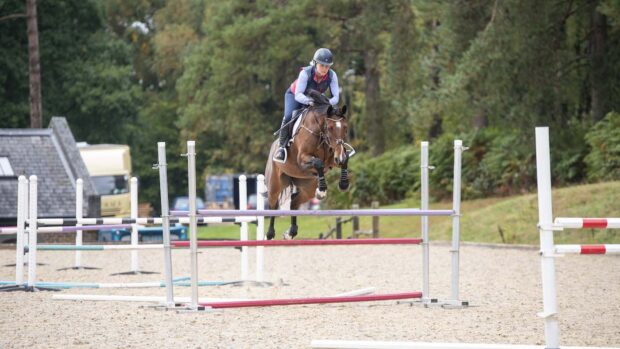At the recent International Eventing Forum (4 February 2019), held at Hartpury, former World showjumping champion and prolific Irish showjumper, Dermott Lennon (pictured) shared some fantastic advice on how to improve in this phase.
Here’s 17 brilliant tips from Dermott…
Warming-up
1. When warming up, I walk, trot and canter in a relaxed way, but ensure that my horse is in front of my leg.
2. Using the leg is a bit of a grey area in terms of what it means. There are a million different ways of using your leg on a horse and you have to do what works for your horse.
3. I like to use spurs and even hot horses must learn to accept your leg and go in front of it — they have to carry themselves and being in front of the leg is part of this.
4. When riding, I use forward and backwards transitions within a pace in a way that the untrained eye wouldn’t be able to see — these small adjustments in a pace is a nice way of using forwards and back.
5. Moving forwards and backwards within a pace doesn’t mean speeding up and slowing down — the horse must always engage their hind-leg and should never lose power in collection.
6. You can always use your voice as a tool for both wanting to move forward or slow down, you can also use it to help create impulsion rather than speed, such as a click on take-off at a fence.
7. A lot of people warm up in a nice collected canter and never open their horses up and get them in front of their leg. They then go into the ring and the first line is an open distance — this is when they either end up not getting the best distance to the fence, or the horse becomes out of control.
8. One exercise you can try is to take your inside hand off the rein while riding — this helps the rider to sit better with a relaxed knee and hip, while always following with the hand.
9. If you are riding flying-changes, it is so important that the rider stays relaxed — this allows you to use your legs independently and helps prevent the horse from becoming anxious and anticipating what you are asking them.
10. When you have built up to an oxer in your warm-up and you have jumped that a couple of times confidently, you can start playing with your canter on the approach.
Walking the course
11. A lot of people are obsessed with strides and stride patterns when walking a course. A lot of people ask me “how many strides are you putting in there?” My answer is always “well it depends how I jump in”. You have to ride what you’re on to create the best jump.
12. In eventing showjumping courses you have a little more time to set your horse up and/or create more canter and engagement, so make good use of that.
Riding courses and training at home
13. By the nature of both horse and rider, when faced with corners, they will want to shorten the stride, so you need to be conscious of this.
14. A lot of people ride heavy even if they don’t weigh a lot — they sit hard against a horse’s back and this has the same affect as giving the horse a good kick — riders must sit with the horse and allow them to move and jump, always following with your hand.
Article continues below…
You might also be interested in:

Learn from the best: Richard Waygood’s tips for showjumping and cross-country riding success
At the 2019 renewal of the International Eventing Forum Richard Waygood shared some of his expertise on how to help

Subscribe to Horse & Hound magazine today – and enjoy unlimited website access all year round
15. If you are driving in first gear and you hit the brakes, the engine will conk out. Therefore, ride forward to start with so that you have somewhere to go if you need to condense your canter.
16. A lot of people have difficult horses, but it’s how we react to them that will ultimately improve or make them worse. For example, sometimes you need to go with a strong horse and then they will learn to back themselves off.
17. When you are your horse are brave enough, challenge your horse — for example, into a deeper take-off spot — this will help create jump. If you don’t challenge them, they will end up faulting more.
For all the latest equestrian news and reports, don’t miss Horse & Hound magazine, out every Thursday




